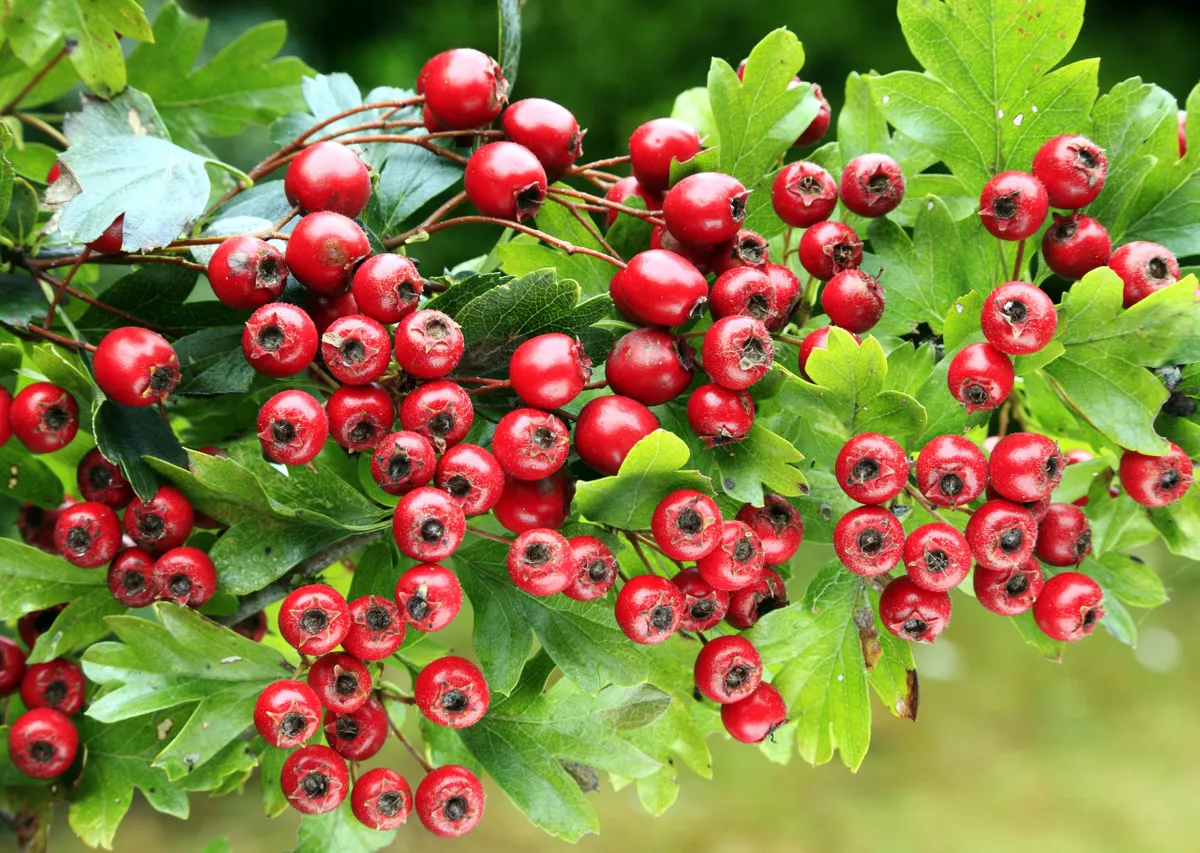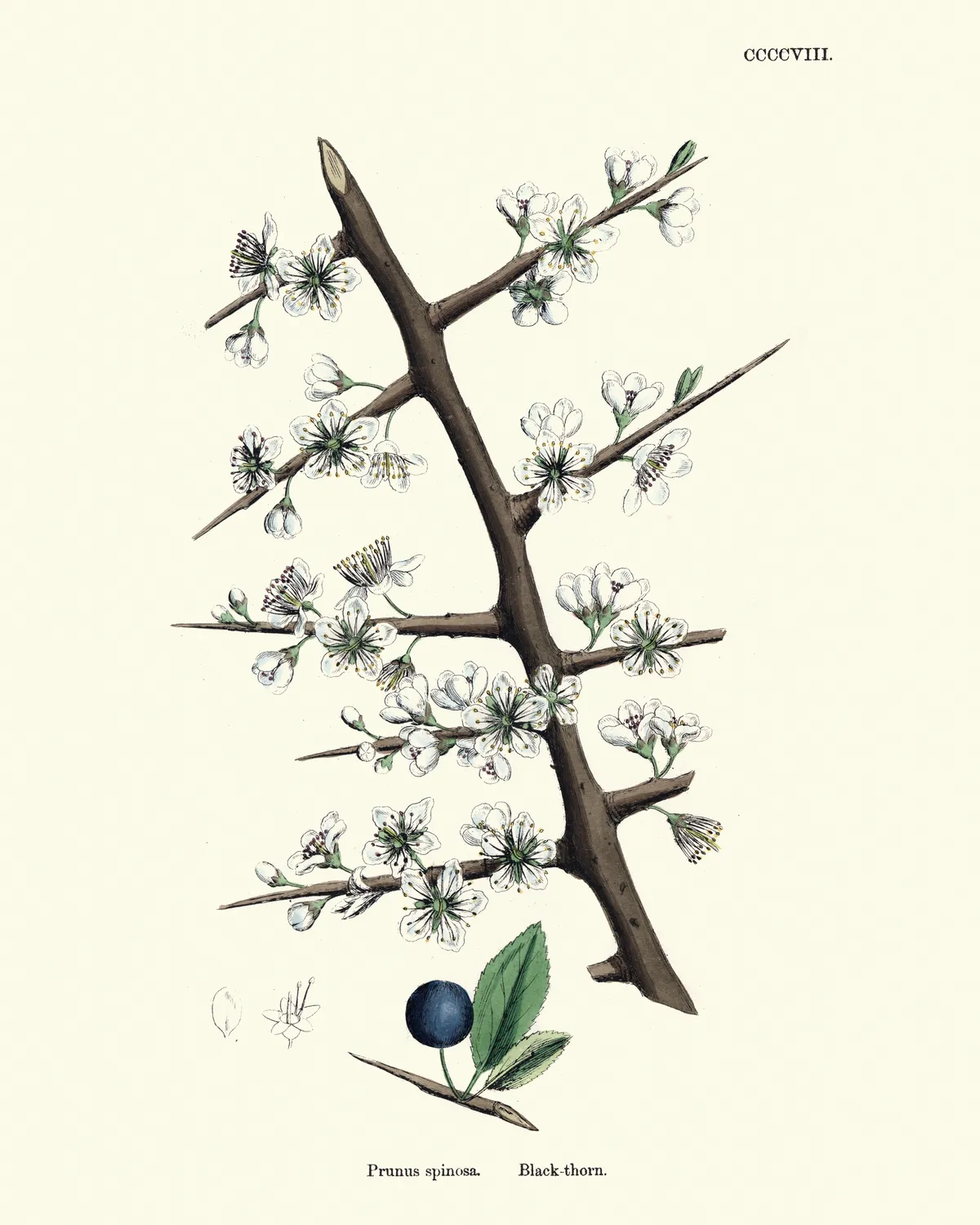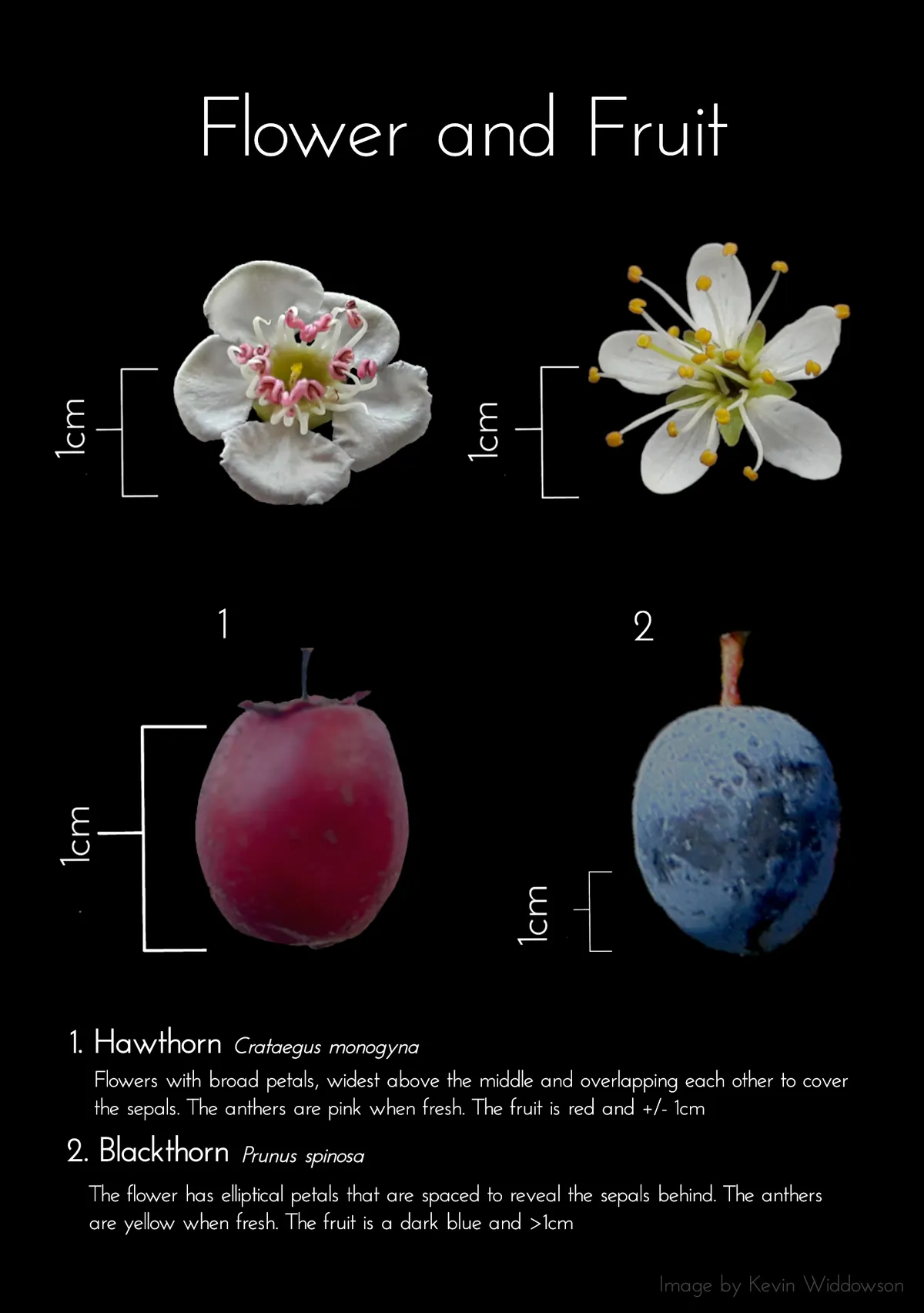Learn how to tell the difference between hawthorn and blackthorn trees in our expert guide from the Botanical Society of Britain & Ireland (BSBI).
Related content:
Hawthorn
Scientific name: Crataegus monogyna

Size: Shrub or small deciduous tree, up to 10m, twigs thorny.
Flowers: 5 white petals; anthers (in the middle of the flower) are pink or red.

Fruit: Round red “haws” c1cm long.

Leaves: 1.5-5cm long, deeply divided into 3-7 lobes
What to look for in winter
Hawthorn twigs are usually shiny, with thorns up to 2cm long. The buds are hairless, and the leaf scar below bud looks like a smiling face!
What to look for in spring/summer
Hawthorn leaves start to appear in March, followed by the fragrant white flowers that come out from April to June, particularly in May. Another name for hawthorn is May-blossom.
The red fruits (haws) can be seen from June onwards.
Where to find hawthorn
Hawthorn can be found across Britain but it is less frequent in northern Scotland, in a variety of habitats: hedgerows, scrubland, woodland edges and as part of the understorey layer in mixed deciduous woodland.
Hawthorn is a native plant, but has also been widely planted for many centuries as stock-proof hedging.

Are hawthorn berries edible?
The haws are an important food source for birds in winter. Haws can be made into a jelly to eat with cheese; they can also be turned into wine, vinegar or chutney.

Foraging recipes using haws:
Blackthorn
Scientific name: Prunus spinosa

Size: Shrub or small deciduous tree, up to 4m, twigs usually (but not always) very thorny.
Flowers: 5 white petals, with yellow or white anthers.

Fruit: Oval blue-black “sloes” c. 2cm long.

Leaves: 1.5-4cm long, elliptical (i.e. widest in the middle and tapering equally at both ends), with small teeth regularly spaced along the leaf margin.
What to look for in winter
Blackthorn twigs are not shiny, with thorns usually more than 2cm long and held at right angles. The buds are hairy, and the leaf scar below the bud looks like a face sucking a lemon!
What to look for in spring/summer
Blackthorn flowers usually start to appear in March, followed by the leaves from April onwards. The fruits (sloes) ripen through the summer.
Where to find blackthorn
Blackthorn can be found across Britain but is less frequent in northern Scotland, in a variety of habitats: hedgerows, scrubland, mixed deciduous woodland, on cliffs and rocky/ scree slopes, on shingle where it grows in prostrate form.
Blackthorn is a native species but is often widely planted in hedgerows and copses, where it can form dense thickets.

Is blackthorn edible?
The fruits have a sharp, astringent taste when fresh but once frosted, they can be used to make sloe gin.

Foraging recipes using sloes:
Something to consider
Going out plant-spotting? Follow the Botanical Society’s Code of Conduct when photographing, foraging or recording wild plants and you can enjoy plant-spotting with nature conservation in mind.
Planting hawthorn or blackthorn? Choose native plants from a reputable supplier for maximum wildlife value – non-native plants may come into flower or fruit unusually early and be “out of synch” with our native wildlife.
How to tell the difference between hawthorn and blackthorn
Separating hawthorn from blackthorn in winter can be tricky, especially if you are presented with plants in a newly cut hedge.
Check for thorns
Check the length (more than 2cm?) and are they pointing upwards or sticking out at right angles?


Often the new growth is without thorns so you will need to rely on other twig characters:
If you have buds on your twig:
Are they hairy or hairless? You may need to use a hand-lens or magnifying glass, or you can try holding a twig up to the light.

How are the buds held – pressed tight to the twig or pointing away? Compare your twig with the photo below.

Then look for the leaf scar just below the bud – does it look like a smiling face or a face sucking a lemon? Take a look at the photo below and see what you think.

Still not sure? If you have landowner’s permission to cut a twig, try the “pith tests” below.


If you have leaves:
Deeply divided into lobes or no lobes but tiny teeth?

If you have flowers:
Are the anthers in the middle of the flower pink to red? Or yellow to white? The anthers are the male parts of the flower – they bear the pollen.
If you have fruits:
Things get much easier! Red, round and c1cm or oval, blue/purple and c2cm?

Test your tree general knowledge with BBC Wildlife's quiz:
The Botanical Society of Britain & Ireland (BSBI) promotes and encourages the study, understanding and enjoyment of our wild plants to support their conservation.
BSBI has a range of helpful hints and links, and ID tools for both beginners and advanced botanists.
Main image: Blackthorn flowers. © Bryan Garnett Photography/Getty

